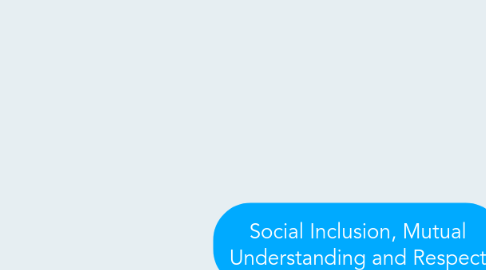Social Inclusion, Mutual Understanding and Respect
저자: Josh Lichtenstein

1. (2) Involve Family and Community
1.1. Who-The family of students, Teachers, local community leaders
1.2. What- Try and connect with families
1.3. When- Outside of school but hopefully they can be involved in the classroom
1.4. Where- In the classroom
1.5. Why- So students can increase their cultural learning
1.6. How- I would invite students parents to come visit the classroom and teach the children about their culture. Perhaps, a French students parent is passionate about cooking and would be willing to come teach to the class about French cuisine. I could bring in some French bread with nutella or a snack with the children.
2. (3) Collaborative cultural Environment
2.1. Who-Teacher
2.2. What-Try and coordinate with other teachers to ensure cultures are being celebrated
2.3. When- During school or teacher meetings
2.4. Where- In school or else you could communicate online with teachers
2.5. Why- By collaborating with other teachers, students can have more of an opportunity to have what they are learning reinforced.
2.6. How- I would schedule a meeting with all co-teachers to discuss social inclusion and strategies for creating a collaborative cultural environment. I would suggest that all of the faculty try an incorporate El Salvadorean or French culture into one aspect of their lesson plans.
3. (1) Value Home Language
3.1. Who- Teachers, Parents, and classmates
3.2. What-Material relative to your students culture
3.3. When-Pick an hour each day for cultural enrichment during the school day
3.4. Where- In the classroom
3.5. Why- To teach all students about El Salvadorean and French culture
3.6. How- I would introduce the students to some vocabulary in both Spanish and French. The students could learn a few expressions such as merci or gracias. They could then practice using the vocabulary with each other and try and create skits where the newly introduced vocab could be introduced.
4. (4) Modify Instruction and assessment
4.1. Who-Teacher created
4.2. What- Modified instruction
4.3. When- During a class session and after a class you can develop an assessment tool.
4.4. Where- In the classroom
4.5. Why- To meet a child's individualized language learning needs.
4.6. How- I could give out an assignment in both English and the child's native language. This would give the student an easier opportunity to absorb the assignment. I would ask all students to hand in the same work in English but by giving instructions in their native language they may have an easier time.
5. (5) Observation and Assessment of Action Plan
5.1. Who- Teacher, Parents, Faculty
5.2. What- Analyze the affectiveness of the modified instruction.
5.3. Where- In the classroom or office
5.4. Why- To determine if the student is achieving greater success in learning.
5.5. When- After regular classtime
5.6. How- I would take the students scores on assignments handed out in English only and compare them with the modified assignment. If the student is performing better on the modified assessment than I would determine it was successful.


